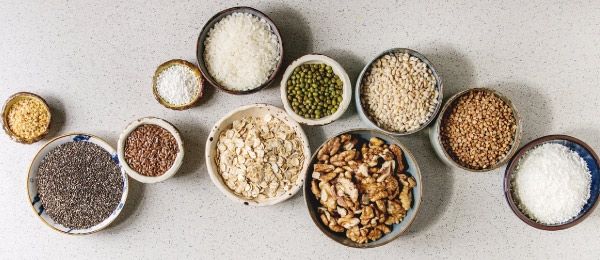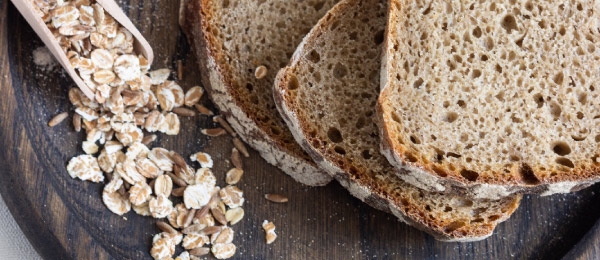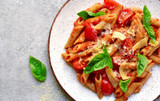
Dietary fibre is the plant-based carbohydrates that, unlike other carbohydrates (such as sugars and starch), can’t be digested or absorbed by the small intestine. Fibre is able to reach the colon where it can feed friendly gut bacteria, helps keep us ‘regular’ and ultimately supports gut health and promotes health and wellbeing.
If you have digestive issues or are just feeling a little clogged up, a simple fix may be to increase your dietary fibre intake. Unfortunately, most Australians don’t manage to eat enough fibre. It’s not surprising - it can be tricky to navigate the different types of dietary fibre, and to pick the right foods to quickly and easily boost your daily intake.
The good news is that fibre-rich foods fit well within a healthy, balanced diet. Just be sure to increase your fibre gradually and drink plenty of water! Head to our blog High Fibre Foods for more information on the foods you should eat.
TYPES OF FIBRE IN FOOD
There are different types of dietary fibre which have different functions and benefits, so it’s important to include all of them in your diet.
Insoluble fibre
Insoluble fibre passes through our system without being broken down. It adds bulk to stools and keeps the digestive system moving. Insoluble fibre is found in wholegrain bread and cereals, nuts, seeds, wheat bran and the skins of fruit and veggies.
Soluble fibre
Soluble fibre dissolves into a gel, drawing water into your gut which softens your stools and supports regular bowel movements.
Soluble fibre not only helps you feel fuller and reduces constipation, but it is also said to lower cholesterol and blood sugar levels. Soluble fibre is found in fruits, vegetables, oats, barley and legumes.
Resistant starch
Resistant starch passes through the digestive system to the large intestine, where it ferments. This is where prebiotics come in, promoting gut health.
Resistant starch can be found in unprocessed cereals and grains, unripe bananas, potatoes, lentils and rice.

HOW MUCH FIBRE SHOULD YOU EAT PER DAY?
The recommended intake of fibre is:
• Women: 25g of fibre per day
• Men: 30g of fibre per day
This roughly breakdowns into the serves below:
• At least 4 serves of wholegrain or wholemeal foods
• At least 5 serves of vegetables, including legumes
• At least 2 serves of fruit

SNEAKY TIPS TO ADD MORE FIBRE INTO YOUR DAY
- Eat fruit and vegetable skins. When you peel fruits and vegetables, you often remove half the fibre. And remember juice does not count!
- When picking bread, pasta, and flour, choose wholemeal/wholegrain options. Whole grains are minimally processed, leaving the whole grain intact.
- Top salads, porridge or yogurt with a sprinkle of bran, chia seeds, psyllium husk or chopped nuts.
- Add more vegetables into your meals. And this doesn't always mean piling your plate high with salad. You can sneak them in like these brownies made with sweet potato, banana bread made with zucchini and muffins with carrot.
- Choose better snacks. Skip the chocolate and instead opt for easy high fibre snacks such as a handful of nuts, berries, an apple, or a bowl of popcorn. You'll feel fuller for longer and increase your fibre intake.
- Replace meat with legumes in a few meals per week. Beans and lentils contain more fibre and make great meat replacers, like in these BBQ Mushroom & Adzuki Bean Burgers.
- Bulk up soups, stews, curries and salads with legumes and grains. Not only will you feel more satiated, but they taste delicious too!



![Urban Forager [Supplier Spotlight] Urban Forager [Supplier Spotlight]](https://cdn11.bigcommerce.com/s-dis4vxtxtc/images/stencil/160w/uploaded_images/urban-forager-thumb-1-.jpg?t=1713225090)


